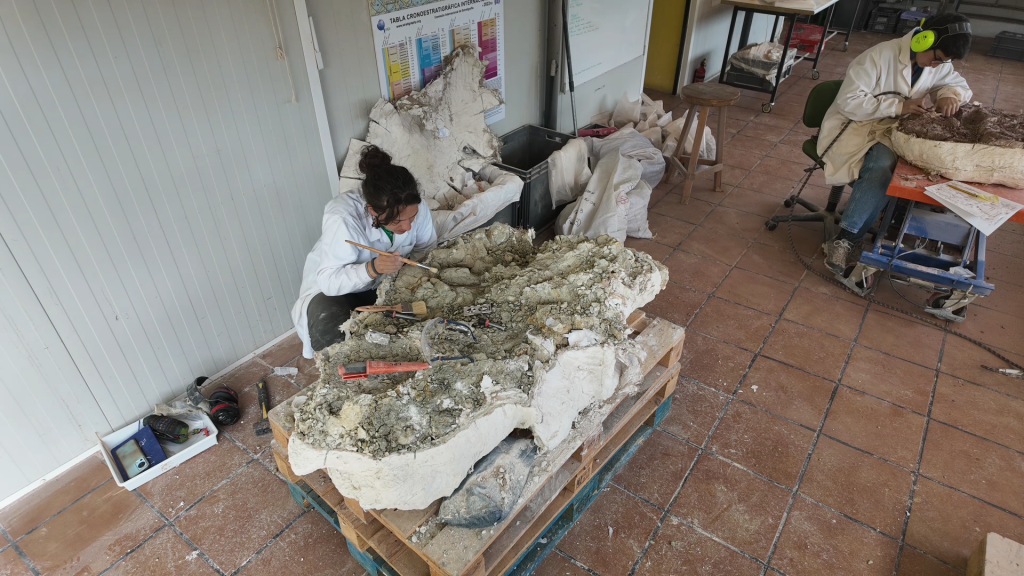(Zaragoza. Thursday, 22 May 2025). The Loarre Paleontological Laboratory, the result of collaboration between the Loarre City Council and the University of Zaragoza, through the Aragosaurus-IUCA research group, recently received a nearly one-ton block of rock containing fossil remains of a large herbivorous ornithopod dinosaur from the iguanodontian group, discovered in the town of Alacón (Teruel). This new specimen, which can be observed during its preparation in the coming weeks, contains at least five bones from the spine and limbs.
The Alacón site was discovered in 2021 by the Aragosaurus-IUCA group and has since yielded dozens of exceptionally well-preserved fossils. The fossils are embedded in lacustrine and palustrine limestone layers which, although they have enabled excellent preservation, also present significant challenges due to their hardness, making cleaning and restoration a complex task.
“We’ve been excavating in Alacón for several years and the site has great potential, but the preparation work is very costly,” says Jara Parrilla Bel, one of the excavation directors. She adds, “We are pleased to finally have funding and a facility like the Loarre Paleontological Laboratory to work on this ‘dinosaur mummy’ and see what’s hidden inside.” Eduardo Medrano Aguado, who also co-directs the project, highlights that “preparing this large block could represent a major step forward in the study of this dinosaur, as it contains at least three or four large skeletal bones that may be key to describing a new species. I encourage everyone to visit the Loarre Paleontological Laboratory—it’s not every day you get to see the process of fossil preparation up close.”
Thanks to funding from the Government of Aragon, the preparation of this block began in early May. The bones are tightly fused together, making individual extraction during excavation impossible. For this reason, the entire block was transported to the Loarre lab, which is specially equipped to handle large-format fossils.
Jara Parrilla Bel during the restoration of the dinosaur bone block. Next to her, Laura de Jorge i Aranda works on a block containing dinosaur eggs from Loarre.
These types of preparations are essential for advancing scientific research and also provide an opportunity for the public to learn about the behind-the-scenes work that takes place before fossils reach museum displays. Visitors to the lab can watch firsthand as specialists carefully remove sediment from the bones and document each discovery.
The Loarre Paleontological Laboratory is open to the public for free visits from Wednesday to Friday, and on weekends through free or guided tours from 11:00 to 14:00 and from 15:00 to 18:00. More information is available at www.huevosdeloarre.com or via email at info@huevosdeloarre.com. You can also follow the project’s progress on Instagram: @OODinolab.
This project has been made possible thanks to the support of the Río Martín Cultural Park, the Government of Aragon, and the participation of numerous members of the Aragosaurus-IUCA group, part of the University Institute for Environmental Sciences of Aragon (IUCA) at the University of Zaragoza.


